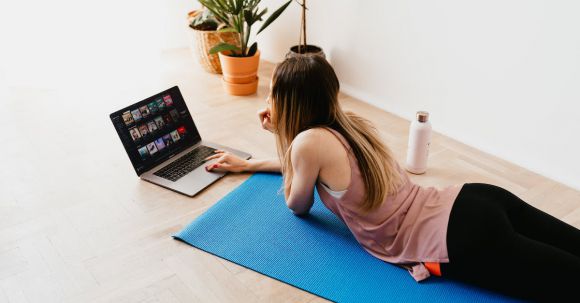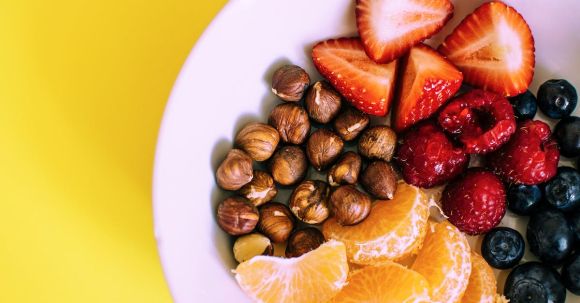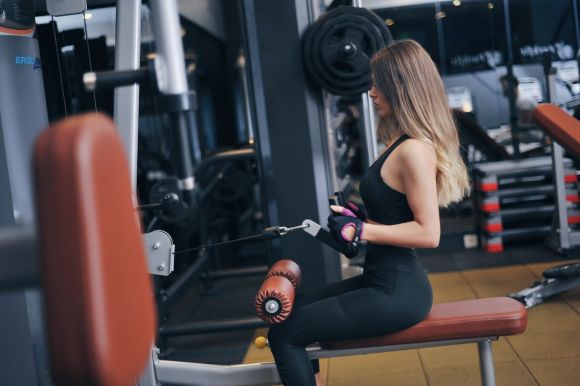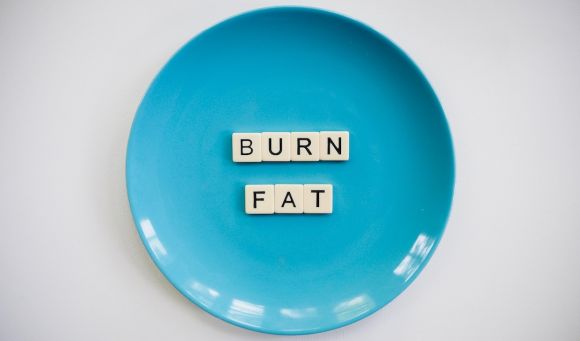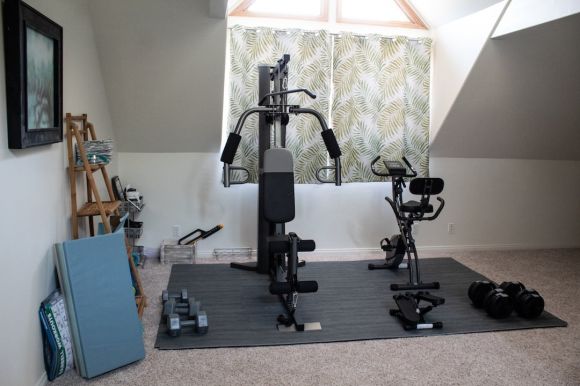In today's digital age, where convenience and efficiency are paramount, it's no surprise that the fitness industry has taken a turn towards the virtual realm. Fit On, a leading online personal training platform, is at the forefront of this trend, offering a revolutionary way to sculpt your ideal physique from the comfort of your own home. By combining expert guidance, personalized workout plans, and a supportive community, Fit On is redefining what it means to achieve your fitness goals.
Blog Posts
Snacking can be a tempting habit, especially when hunger strikes between meals. But reaching for unhealthy snacks can sabotage your efforts to maintain a balanced diet. The good news is that there are plenty of healthy snacking alternatives available that not only satisfy your cravings but also provide nourishment. In this article, we will explore some ideas and alternatives for healthy snacking to help you make better choices.
1. Fresh Fruits and Vegetables
When it comes to healthy snacking, fresh fruits and vegetables are always a great option. They are packed with essential vitamins, minerals, and fiber. Try keeping a bowl of assorted fruits on your kitchen counter or a container of pre-cut vegetables in your fridge for easy access. Whether it's a juicy apple, a handful of berries, or some crunchy carrot sticks, these natural snacks will not only satisfy your hunger but also provide a refreshing burst of flavor.2. Nuts and Seeds
Nuts and seeds are excellent sources of healthy fats, protein, and fiber. They are also rich in vitamins and minerals, making them a nutritious choice for snacking. Almonds, walnuts, pumpkin seeds, and sunflower seeds are some examples of healthy options. However, it's important to keep portion sizes in mind as they can be high in calories. A small handful is usually sufficient to keep you satisfied between meals.3. Greek Yogurt
Greek yogurt is a versatile and protein-rich snack that can be enjoyed in various ways. You can eat it plain or add some fresh fruits, nuts, or a drizzle of honey for added flavor. Greek yogurt not only provides a good source of protein but also contains probiotics that promote a healthy gut. It's a great option for those looking to satisfy their sweet tooth while still making a healthy choice.4. Rice Cakes and Whole Grain Crackers
If you're craving something crunchy, rice cakes and whole grain crackers can be a healthier alternative to traditional potato chips or cookies. Look for options that are made with whole grains and minimal added sugars. You can top them with avocado, hummus, or a slice of lean protein like turkey or chicken for a satisfying and nutritious snack.5. Homemade Smoothies
Smoothies are a fantastic way to pack in nutrients while enjoying a delicious snack. With endless combinations of fruits, vegetables, and protein sources like yogurt or protein powder, you can create a personalized blend that suits your taste and dietary needs. Just be mindful of the added sugars that can come from sweetened yogurt or fruit juices. Opt for unsweetened options and use natural sweeteners like honey or dates instead.6. Dark Chocolate
Yes, you read that right! Dark chocolate can be a guilt-free indulgence when enjoyed in moderation. It contains antioxidants and may have various health benefits, including improved heart health. Look for dark chocolate that has a high percentage of cocoa (70% or higher) and enjoy a small piece or two as a treat. In conclusion, healthy snacking doesn't have to be boring or tasteless. By incorporating fresh fruits and vegetables, nuts and seeds, Greek yogurt, rice cakes and whole grain crackers, homemade smoothies, and even dark chocolate into your snacking routine, you can satisfy your cravings while nourishing your body. Remember to listen to your body's hunger cues and choose snacks that provide a balance of nutrients. Happy snacking!
In today's fast-paced world, finding time for exercise can be a challenge. Between work, family, and other responsibilities, it often feels like there just aren't enough hours in the day. However, incorporating cardio workouts into your daily routine is not only beneficial for your physical health but also for your mental well-being. By making a few simple adjustments and prioritizing your fitness, you can easily fit cardio workouts into even the busiest of schedules.
1. Start with a plan
The first step in fitting cardio workouts into a busy schedule is to create a plan. Take a few minutes to assess your daily routine and identify pockets of time that can be dedicated to exercise. Whether it's waking up 30 minutes earlier or utilizing your lunch break, having a clear plan in place will help you stay motivated and committed to your fitness goals.2. Utilize High-Intensity Interval Training (HIIT)
One of the most efficient ways to incorporate cardio into a busy schedule is through High-Intensity Interval Training (HIIT). HIIT workouts involve short bursts of intense exercise followed by brief recovery periods. These workouts can be completed in as little as 15-20 minutes and provide the same cardiovascular benefits as longer, steady-state workouts. By maximizing your effort during these short bursts, you can achieve a high level of cardiovascular fitness in less time.3. Multitask with active transportation
Another way to fit cardio workouts into your busy schedule is by incorporating active transportation into your daily routine. Instead of driving to work or running errands, consider walking, biking, or using public transportation. Not only will this help you get your heart rate up, but it will also save you time and money on parking. Look for opportunities to be active throughout your day, such as taking the stairs instead of the elevator or going for a walk during your lunch break.4. Schedule workouts as non-negotiable appointments
Treat your cardio workouts as non-negotiable appointments and schedule them into your calendar. Just like you wouldn't cancel a meeting or a doctor's appointment, prioritize your fitness and commit to your scheduled workouts. By viewing exercise as an essential part of your day, you'll be more likely to make it a priority and follow through.5. Make use of technology
Technology can be a helpful tool in fitting cardio workouts into a busy schedule. There are a variety of fitness apps and online platforms that offer guided workout routines that can be done from the comfort of your own home. Whether it's a 20-minute workout video or a virtual cardio class, these resources provide convenience and flexibility for those with limited time.6. Break it up throughout the day
If finding a solid block of time for a workout seems impossible, consider breaking it up into smaller increments throughout the day. Research has shown that even short bouts of exercise can have significant health benefits. Try fitting in 10 minutes of cardio in the morning, another 10 minutes during your lunch break, and a final 10 minutes in the evening. These shorter workouts can add up and provide the same benefits as a longer, continuous workout.7. Find activities you enjoy
Lastly, finding activities that you enjoy can make fitting cardio workouts into your busy schedule feel less like a chore. Whether it's dancing, swimming, or playing a sport, incorporating activities that you genuinely enjoy into your fitness routine will make it easier to find the time and motivation to exercise. In conclusion, fitting cardio workouts into a busy schedule is achievable with proper planning and prioritization. By utilizing high-intensity interval training, incorporating active transportation, and making use of technology, you can easily find time for cardio exercise in your daily routine. Remember to treat your workouts as non-negotiable appointments, break up your exercise throughout the day if needed, and find activities that you genuinely enjoy. With these strategies in place, you'll be on your way to a healthier, more active lifestyle.
In today's fast-paced world, it's easy to neglect our health and well-being. We often find ourselves caught up in the demands of work, family, and other responsibilities, leaving little time for self-care. However, making our health a priority is essential for a fulfilling and balanced life. If you're looking to start your journey to a healthier you, look no further than Fit on - a comprehensive health and fitness platform designed to help you achieve your wellness goals.
Discover a World of Fitness
Fit on offers a wide range of fitness programs and classes to suit every individual's needs and preferences. Whether you're a beginner looking to kickstart your fitness journey or an experienced athlete seeking to challenge yourself, Fit on has something for everyone. From yoga and pilates to high-intensity interval training (HIIT) and strength training, you'll find a wealth of options to keep you engaged and motivated.Expert Guidance Every Step of the Way
One of the standout features of Fit on is its team of expert trainers and instructors who are dedicated to helping you achieve your fitness goals. With their wealth of knowledge and experience, they provide guidance and support throughout your fitness journey. Whether you need help with form and technique or have specific questions about nutrition, you can count on the experts at Fit on to provide you with the answers you need to succeed.Flexibility to Fit Your Lifestyle
Fit on understands that everyone's schedule is different. That's why they offer flexible workout options that fit seamlessly into your lifestyle. Whether you prefer to exercise in the comfort of your own home or enjoy the atmosphere of a group fitness class, Fit on has you covered. With on-demand workouts and live classes, you can choose when and where to get your sweat on. No more excuses - Fit on makes it easy to prioritize your health and well-being.Track Your Progress and Stay Motivated
One of the keys to achieving your fitness goals is staying motivated. Fit on provides you with the tools you need to track your progress and stay on track. With their built-in tracking system, you can monitor your workouts, set goals, and see how far you've come. Additionally, Fit on offers a supportive community where you can connect with like-minded individuals, share your achievements, and find inspiration. Surrounding yourself with a community of people who share your goals can be a powerful motivator on your journey to a healthier you.Invest in Your Health
Prioritizing your health is one of the best investments you can make. With Fit on, you have the opportunity to invest in yourself and take control of your well-being. By committing to a regular fitness routine and making healthier choices, you'll not only improve your physical health but also enhance your mental and emotional well-being. Remember, it's never too late to start your journey to a healthier you, and Fit on is here to support you every step of the way. In conclusion, Fit on is a comprehensive health and fitness platform that offers a wide range of fitness programs, expert guidance, flexibility, and the tools to track your progress. By taking advantage of what Fit on has to offer, you can start your journey to a healthier you today. Remember, investing in your health is a lifelong commitment, and Fit on is the perfect partner to help you achieve your wellness goals. So, what are you waiting for? It's time to prioritize your health and embark on a transformative journey with Fit on.
Losing weight can be a challenging and often frustrating journey. With so many weight loss programs available, it can be overwhelming to choose the right one that is both effective and efficient. In this article, we will explore some key factors to consider when selecting a weight loss program that will help you achieve your goals.
Understanding Your Goals
Before embarking on a weight loss program, it is essential to have a clear understanding of your goals. Are you looking to shed a few pounds for a special occasion or aiming for a long-term lifestyle change? Knowing your goals will help you choose a program that aligns with your needs and expectations.Healthy Eating Habits
One of the most crucial aspects of any weight loss program is adopting healthy eating habits. Fad diets and restrictive meal plans may promise quick results, but they are often unsustainable and can be detrimental to your overall health. Instead, opt for a program that promotes balanced and nutritious meals, emphasizing whole foods such as fruits, vegetables, lean proteins, and whole grains.Regular Physical Activity
Another key component of an effective weight loss program is incorporating regular physical activity. Exercise not only helps burn calories but also improves cardiovascular health, boosts metabolism, and enhances overall well-being. Look for a program that offers a variety of exercises to keep you engaged and motivated, such as cardio, strength training, and flexibility exercises.Behavioral Changes
Successful weight loss programs recognize the importance of addressing the underlying behavioral patterns and habits that contribute to weight gain. A program that focuses on behavioral changes helps you develop a healthier relationship with food, manage emotional eating, and make sustainable lifestyle changes. It may include strategies such as mindful eating, journaling, and stress management techniques.Accountability and Support
Accountability and support play a crucial role in staying motivated and on track with your weight loss goals. Look for a program that offers regular check-ins, support groups, or access to a personal coach or nutritionist. Having someone to hold you accountable and provide guidance can significantly increase your chances of success.Flexibility and Adaptability
Life is unpredictable, and it is essential to choose a weight loss program that is flexible and adaptable to your individual needs and circumstances. A program that allows for modifications and adjustments ensures that you can stick with it even when facing challenges or changes in your routine. Avoid programs that are rigid and do not accommodate personal preferences or dietary restrictions.Sustainable Results
While quick weight loss may be tempting, it is crucial to choose a program that focuses on long-term, sustainable results. Rapid weight loss often leads to a rebound effect, where the lost weight is regained once the program ends. Look for a program that encourages gradual weight loss, promotes healthy habits, and provides tools for weight maintenance once you have reached your goal. In conclusion, effective and efficient weight loss programs encompass various key factors, including healthy eating habits, regular physical activity, behavioral changes, accountability and support, flexibility, and sustainable results. By considering these factors and tailoring a program to your individual needs, you can embark on a successful weight loss journey that leads to lasting results and improved overall well-being. Remember, consistency and dedication are key, so choose a program that resonates with you and stick with it for the best outcome.
In today's busy world, finding time to hit the gym can be a challenge. However, that doesn't mean you have to sacrifice your fitness goals. With the right home exercises, you can increase your strength and build muscle right in the comfort of your own home. Here are some effective exercises that require minimal equipment and space.
Bodyweight Exercises: No Equipment Needed
You don't need fancy equipment to get a great workout at home. Bodyweight exercises are a simple yet effective way to build strength. These exercises use your own body weight as resistance, making them perfect for home workouts. Some popular bodyweight exercises include push-ups, squats, lunges, and planks.Push-ups: The Ultimate Upper Body Exercise
Push-ups are one of the best exercises for building upper body strength. They target your chest, shoulders, triceps, and core muscles. To perform a push-up, start in a high plank position with your hands slightly wider than shoulder-width apart. Lower your body down towards the floor, keeping your core engaged and your back straight. Push yourself back up to the starting position and repeat for the desired number of repetitions.Squats: Strengthen Your Lower Body
Squats are a great exercise for strengthening your lower body, including your quads, hamstrings, and glutes. To perform a squat, stand with your feet shoulder-width apart. Lower your body down as if you were sitting back into a chair, keeping your knees in line with your toes. Push through your heels to return to the starting position and repeat.Lunges: Target Your Legs and Glutes
Lunges are another excellent exercise for building lower body strength. They target your quads, hamstrings, and glutes. To perform a lunge, start by standing with your feet hip-width apart. Take a step forward with your right foot and lower your body down until your right knee is at a 90-degree angle. Push through your right heel to return to the starting position and repeat on the other side.Planks: Strengthen Your Core
Planks are a challenging exercise that targets your core muscles, including your abs, obliques, and lower back. To perform a plank, start in a high plank position with your hands directly under your shoulders. Engage your core and hold the position for as long as you can. Make sure to keep your back straight and avoid sagging or lifting your hips.Resistance Band Exercises: Affordable and Versatile
Resistance bands are a great addition to any home workout routine. They are affordable, portable, and offer a wide range of exercises to target different muscle groups. Some popular resistance band exercises include bicep curls, shoulder presses, and glute bridges.Bicep Curls: Tone Your Arms
Bicep curls are an excellent exercise for toning your arms. To perform a bicep curl with a resistance band, step on the band with both feet and hold the handles in your hands. Start with your arms fully extended and curl the handles up towards your shoulders, keeping your elbows close to your body. Slowly lower the handles back down and repeat.Shoulder Presses: Strengthen Your Shoulders
Shoulder presses are a great exercise for strengthening your shoulder muscles. To perform a shoulder press with a resistance band, step on the band with both feet and hold the handles in your hands. Start with your hands at shoulder level and press the handles up overhead, fully extending your arms. Slowly lower the handles back down and repeat.Glute Bridges: Activate Your Glutes
Glute bridges are an effective exercise for activating your glute muscles. To perform a glute bridge with a resistance band, place the band just above your knees. Lie on your back with your feet flat on the floor and your knees bent. Lift your hips off the ground, squeezing your glutes at the top of the movement. Lower your hips back down and repeat.Conclusion: Achieve Your Fitness Goals at Home
With the right exercises, you can increase your strength and build muscle right in the comfort of your own home. Bodyweight exercises and resistance band exercises are affordable, versatile, and require minimal equipment and space. Incorporate these exercises into your home workout routine and watch as your strength and fitness levels soar. Start today and achieve your fitness goals without ever stepping foot in a gym.
Have you ever experienced a mid-afternoon slump? That feeling when your energy levels drop, and you can barely keep your eyes open? We've all been there. But have you ever stopped to consider that your nutrition might be to blame? The food we eat plays a crucial role in determining our energy levels throughout the day. In this article, we will explore the connection between nutrition and energy levels, and how making the right dietary choices can help boost your energy and overall well-being.
Understanding Macronutrients
To understand the relationship between nutrition and energy levels, it's important to first understand macronutrients. Macronutrients are the three main components of our diet: carbohydrates, proteins, and fats. Each of these macronutrients plays a unique role in providing energy to our bodies. Carbohydrates are the body's primary source of energy. When we consume carbohydrates, they are broken down into glucose, which is then used by our cells for energy. Whole grains, fruits, and vegetables are excellent sources of complex carbohydrates, which release energy slowly and provide a steady source of fuel throughout the day. Proteins, on the other hand, are essential for repairing and building tissues. They also play a role in providing energy when carbohydrates are in short supply. Foods such as lean meats, poultry, fish, eggs, and legumes are rich sources of protein. Fats, although often demonized, are an important part of a balanced diet. They provide a concentrated source of energy and are necessary for the absorption of certain vitamins. Choosing healthy fats, such as those found in avocados, nuts, and olive oil, can help maintain stable energy levels.The Role of Micronutrients
While macronutrients are crucial for energy production, micronutrients also play a vital role. Micronutrients are the vitamins and minerals that our bodies need in small amounts to function properly. B vitamins, for example, are essential for converting food into energy. Iron is necessary for the production of red blood cells, which carry oxygen to our cells and tissues. Magnesium is involved in over 300 biochemical reactions in the body, including energy production. A well-balanced diet that includes a variety of fruits, vegetables, whole grains, lean proteins, and healthy fats ensures an adequate intake of these micronutrients, which can help optimize energy levels.The Impact of Hydration
In addition to proper nutrition, hydration also plays a significant role in our energy levels. Even mild dehydration can lead to fatigue and decreased cognitive function. Water is essential for transporting nutrients to our cells and removing waste products. Aim to drink at least 8 glasses of water per day, and more if you are physically active or in a hot climate.The Importance of Meal Timing
When and how often we eat can also impact our energy levels. Eating regular meals and snacks throughout the day helps maintain stable blood sugar levels, preventing energy crashes. It's also important to include a balance of macronutrients in each meal and snack to provide a steady release of energy.Conclusion: Fueling Your Body for Optimal Energy
In conclusion, the food we eat has a direct impact on our energy levels. Choosing a well-balanced diet rich in complex carbohydrates, lean proteins, healthy fats, and micronutrients can help fuel our bodies and maintain stable energy throughout the day. Remember to stay hydrated and eat regular meals and snacks to prevent energy crashes. By making the right dietary choices, you can optimize your energy levels and improve your overall well-being.
In today's busy world, finding time to hit the gym or attend sports training sessions can be a challenge. However, staying active and improving your athletic abilities doesn't have to be limited to a formal workout setting. With the right home exercises, you can enhance your athletic performance and maintain a healthy lifestyle. Here are some effective exercises that you can do from the comfort of your own home.
Bodyweight Strength Training
Strength training is essential for building muscle, improving endurance, and increasing overall athletic performance. One of the most convenient ways to incorporate strength training into your home workouts is through bodyweight exercises. These exercises use your own body as resistance and require little to no equipment. Push-ups are a classic bodyweight exercise that targets your chest, shoulders, triceps, and core muscles. To perform a push-up, start in a plank position with your hands slightly wider than shoulder-width apart. Lower your body until your chest nearly touches the floor, then push back up to the starting position. Squats are another effective bodyweight exercise that works your lower body muscles, including your quadriceps, hamstrings, and glutes. Stand with your feet shoulder-width apart, then lower your body down as if you were sitting back into a chair. Keep your chest up and your knees aligned with your toes. Push through your heels to stand back up.Plyometric Exercises
Plyometric exercises are explosive movements that improve power, speed, and agility. These exercises involve quick and powerful muscle contractions and are great for athletes looking to enhance their performance in sports such as basketball, soccer, or track and field. Jump squats are a popular plyometric exercise that targets your leg muscles and improves explosive power. Start in a squat position, then explode upward, jumping as high as you can. Land softly back into the squat position and immediately repeat the movement. Burpees are another challenging plyometric exercise that works your entire body. Start in a standing position, then squat down and place your hands on the floor. Kick your feet back into a plank position, perform a push-up, then jump your feet back towards your hands. Explosively jump up into the air, reaching your arms overhead.Speed and Agility Drills
Improving your speed and agility is crucial for many sports, including soccer, basketball, and tennis. Fortunately, you can work on these skills at home with simple drills that require minimal space. Ladder drills are excellent for enhancing footwork, coordination, and quickness. Lay an agility ladder on the ground and perform various movements, such as running forward, sideways, or performing high knees through the ladder. Cone drills are another effective way to improve speed and change of direction. Set up cones in a straight line or in a zigzag pattern, then sprint from one cone to the next, touching each cone as you go. Vary the distance between cones and the pattern to challenge yourself further.Flexibility and Mobility Exercises
Flexibility and mobility are often overlooked but are crucial for preventing injuries and improving athletic performance. Incorporating exercises that improve your range of motion can help you move more efficiently and perform better in your chosen sport. Dynamic stretches, such as leg swings, arm circles, and walking lunges, are great for warming up the muscles and increasing flexibility. Perform these stretches before your workouts to prepare your body for the physical demands of exercise. Yoga is another excellent way to improve flexibility and mobility. There are many online resources and videos available that guide you through various yoga poses and sequences that target different muscle groups.Conclusion
Enhancing your athletic abilities doesn't have to be limited to a gym or sports training facility. With the right home exercises, you can improve your strength, power, speed, agility, and flexibility. Incorporate these exercises into your daily routine, and you'll be well on your way to reaching your athletic goals. Remember to listen to your body, start gradually, and always maintain proper form to prevent injuries.
In today's fast-paced world, finding time to hit the gym can be a challenge. However, that doesn't mean you have to neglect your fitness goals, especially when it comes to strengthening your upper body. With a few simple exercises and minimal equipment, you can effectively work out your arms, shoulders, and chest in the comfort of your own home.
Push-Ups: The Classic Upper Body Exercise
Push-ups are a classic exercise that targets multiple muscles in your upper body, including your chest, shoulders, and triceps. They require no equipment and can be modified to suit your fitness level. To perform a push-up, start by getting into a plank position with your hands slightly wider than shoulder-width apart. Lower your body down, keeping your back straight, until your chest almost touches the ground, and then push back up to the starting position. Aim for three sets of 10-15 repetitions.Chair Dips: Targeting Your Triceps
Chair dips are an excellent exercise for targeting your triceps, the muscles on the back of your upper arms. To perform chair dips, sit on the edge of a sturdy chair or bench with your hands gripping the edge. Walk your feet forward, keeping your knees bent at a 90-degree angle. Lower your body down by bending your elbows until your upper arms are parallel to the floor, and then push back up to the starting position. Aim for three sets of 10-15 repetitions.Plank Variations: Strengthening Your Core and Shoulders
Planks are a great exercise for strengthening not only your core but also your shoulders and upper body. There are several variations you can try to target different muscle groups. The basic plank involves getting into a push-up position but resting on your forearms instead of your hands. Hold this position for 30 seconds to a minute, focusing on keeping your core engaged and your body in a straight line. To target your shoulders more, you can try a side plank by rotating your body to the side and supporting yourself on one forearm. Hold this position for 30 seconds on each side.Resistance Band Exercises: Adding Resistance to Your Workout
If you want to add resistance to your upper body workout without investing in heavy weights, resistance bands are a great option. They are affordable, portable, and versatile. You can use them to target various muscle groups, including your biceps, triceps, and shoulders. One effective exercise is the bicep curl. Stand with your feet shoulder-width apart, holding the resistance band with your palms facing up. Keeping your elbows close to your sides, curl the band up towards your shoulders, and then slowly lower it back down. Aim for three sets of 10-15 repetitions.Conclusion: Stay Fit with Home Upper Body Workouts
Strengthening your upper body doesn't have to require expensive equipment or a trip to the gym. By incorporating exercises like push-ups, chair dips, planks, and resistance band workouts into your routine, you can effectively work out your arms, shoulders, and chest from the comfort of your own home. Remember to start with proper form and gradually increase the intensity as you get stronger. With consistency and dedication, you can achieve a strong and toned upper body without ever leaving your living room.
In today's fast-paced and demanding world, cultivating patience and resilience has become more important than ever. The constant pressure to achieve, the never-ending stream of distractions, and the challenges of daily life can easily overwhelm us. However, by incorporating yoga and meditation into our daily routine, we can develop the qualities of patience and resilience that will help us navigate through life's ups and downs with grace and ease.
